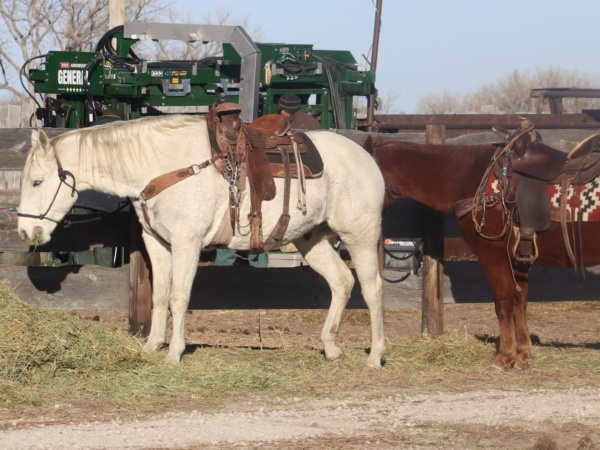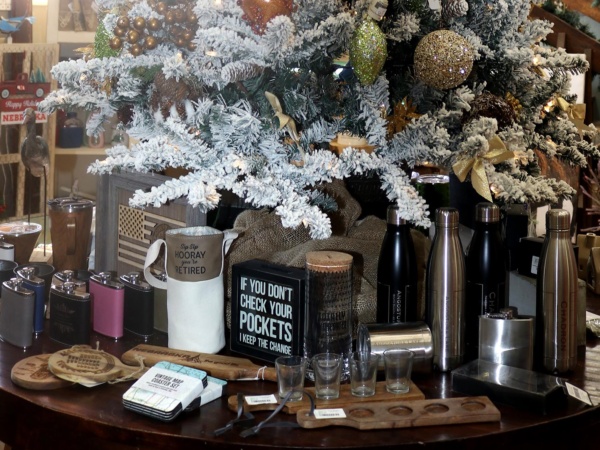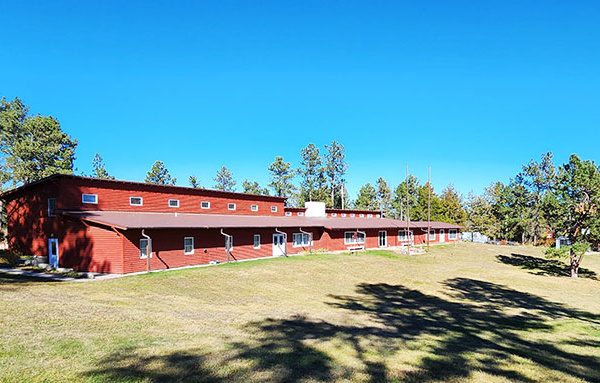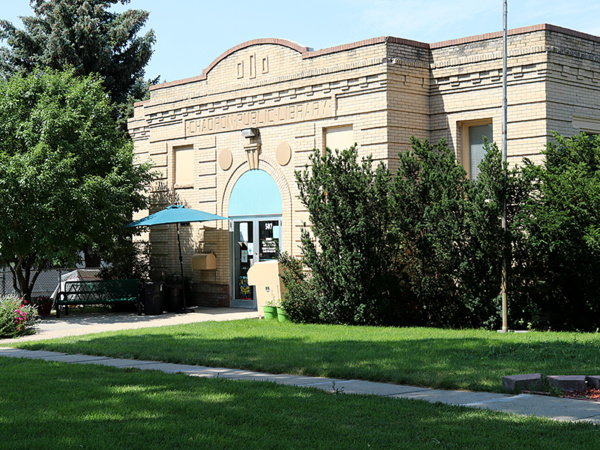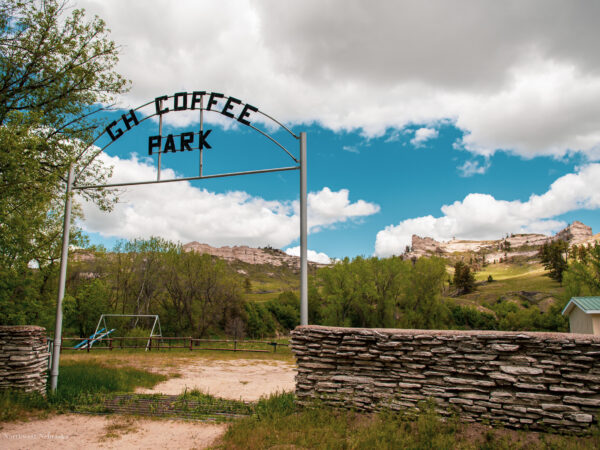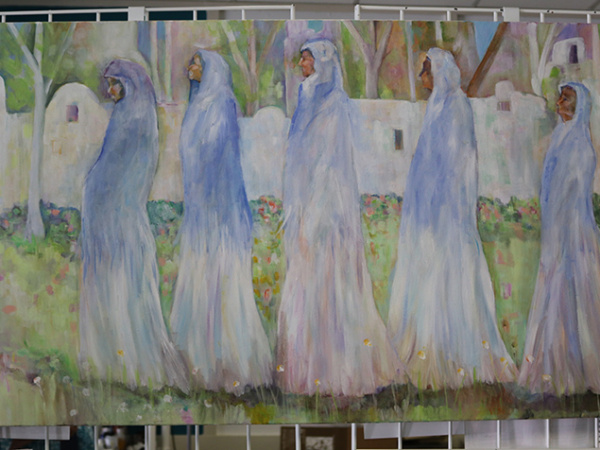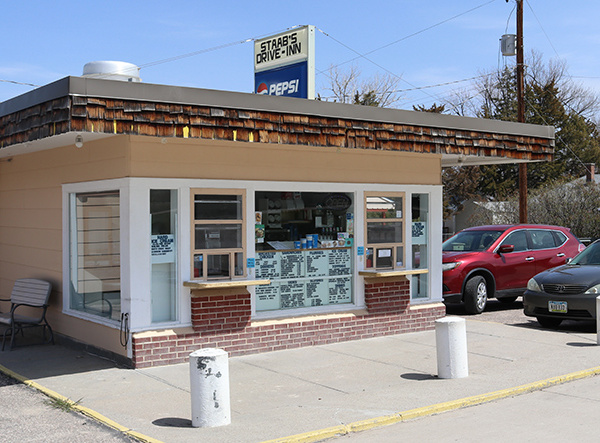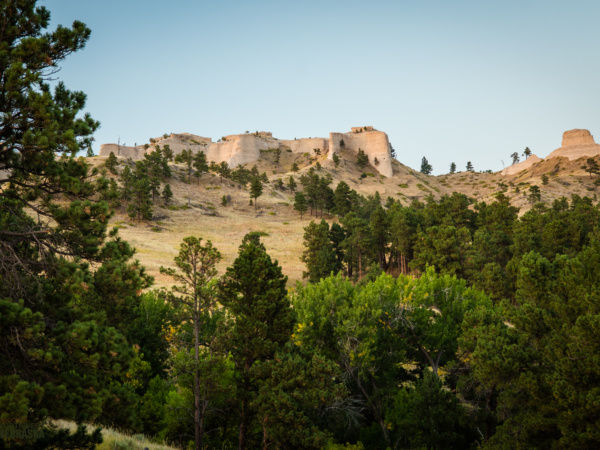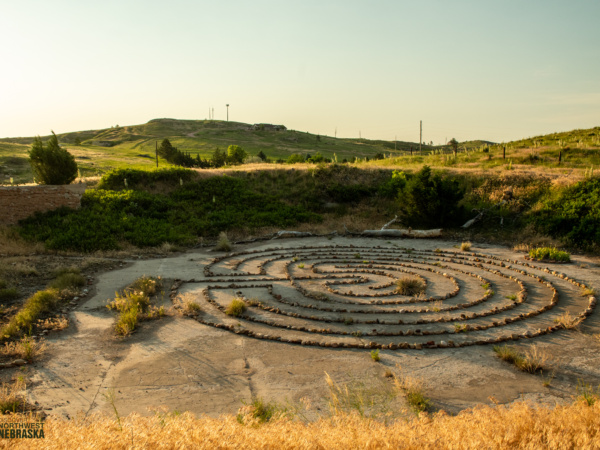By Kerri Rempp
Discover Northwest Nebraska
Most Nebraska ranchers and their veterinarians probably don’t pay much attention to the scenery and historical significance of their surroundings when there’s work to be done, but a recent trip to Northwest Nebraska by veterinarians Ben and Erin Schroeder of “Heartland Docs, DVM” combined all of those elements.
The Schroeders made the trek from Hartington to Harrison to work cattle for client Jerry Stewart, who owns property in Sioux County. A vet tech and an assistant from Schroeders’ Cedar County Veterinary Services joined them, visiting western Nebraska for the first time. Since launching their National Geographic Wild show in 2019 the couple said they’ve had the opportunity to explore more of Nebraska.
Whether its releasing raptors at Fontenelle Forest, watching the crane migration or working cattle in Northwest Nebraska, the Schroeders share the unique opportunities with camera crews and viewers each episode.
“I’ve lived in Nebraska my entire life and never done some of these things,” Ben said, adding that residents need to get out and discover everything the state has to offer. “I told Erin there’s one thing I love almost as much as her, and that’s the state of Nebraska.”
Ben grew up in Cedar County before heading to Kansas State University for veterinary school, where he met Erin, a native of upstate New York. Two weeks later they were engaged; they eventually returned to Hartington to work with Ben’s father, John, in his veterinary practice. They purchased the business in 2007 and expanded it to include offices in Yankton and Vermillion, South Dakota. With seven vets and 27 staff members, they were plenty busy, but took on the challenge of renovating historic buildings in their hometown.


“Ben and I really enjoy historic buildings,” Erin said.
An Omaha World-Herald story about their work, which includes the 1917 Hartington Hotel, dubbed them the next Chip and Joanna Gaines of “Fixer Upper” fame.
“It went out on the AP (Associated Press), and all these calls started coming in,” Erin recalled.
An initial pitch to renovate vet clinics held little interest for the Schroeders, but a 2018 Skype interview caught the attention of National Geographic Wild. In January 2019, Ben and Erin learned “Heartland Docs, DVM” would be picked up for one season.
“I’ll never forget that phone call,” Ben said.
The constant presence of camera crews forces the couple to be always in the moment.
“It makes us have a deeper connection,” Erin said. “We wanted to be authentic. We really wanted to represent what the Midwest is all about and be a positive voice for agriculture.”
“With that comes great responsibility,” Ben added. Agriculture is number one industry in Nebraska, and it’s how we feed the world, he continued. It’s important to them they tell that story and educate viewers on topics like animal welfare and safety, beef quality assurance and fear-free animal handling.
Ben grew up traveling to farms and ranches as a child with his father and loved the camaraderie he saw.
“I fell in love with the people and lifestyle,” he said. That drove his decision to enter vet school, while Erin said she knew from a young age she would be a veterinarian.

Sharing the moments they experience with their clients, along with their two sons, Charlie and Chase, on television was an unexpected turn but one for which they are grateful.
“We are a testament to just say yes and try,” Ben said, adding that each time they’ve been uncertain, they’ve had the courage to say yes and it’s led to nothing but good things.
They are currently shooting season five of “Heartland Docs, DVM.”
“Everybody’s worried the magic is going to quit,” Ben said. “We’ll keep doing the show as long as it makes us feel good at the end of the day.”
They’ve put further renovations of historic buildings on hold, and they sold their two South Dakota practices since starting the show, prioritizing what’s most important to them.
On a recent morning in Northwest Nebraska, with the mercury sitting at 2 degrees, that was working cattle for a valued client. In between sessions at the ranch, Ben, Erin and their crew stayed at Fort Robinson State Park, where all those historic buildings had Erin excited. The focus of this trip, however, had to remain on the veterinary work at hand.
“We definitely know we’re coming back,” Ben said.
“Heartland Docs, DVM” airs on National Geographic Wild and is streamed on Disney+. Watch an episode at https://www.youtube.com/watch?v=Bl5npZ_-J24.
